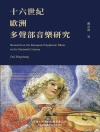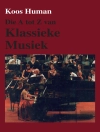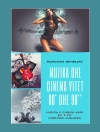Demonstrates the profound impact of The Poems of Ossian on composers of the Romantic Era and later: Beethoven, Schubert, Mendelssohn, Brahms, Massenet, and many others.
Beyond Fingal’s Cave: Ossian in the Musical Imagination is the first study in English of musical compositions inspired by the poems published in the 1760s and attributed to a purported ancient Scottish bard named Ossian. From around 1780 onwards, the poems stimulated poets, artists, and composers in Europe as well as North America to break away from the formality of the Enlightenment. The admiration for Ossian’s poems -shared by Napoleon, Goethe, and Thomas Jefferson – was an important stimulus in the development of Romanticism and the music that was a central part of it. More important still was the view of the German cultural philosopher Johann Gottfried Herder, who saw past the controversy over the poems’ authenticity to the traditional elements in these heroic poems and their mood of lament.
James Porter’s long-awaited book traces the traditional sources used by James Macpherson for his epoch-making prose poems and examines crucial works by composers such as Beethoven, Schubert, Mendelssohn, Brahms, and Massenet. Many other relatively unknown composers were also moved to write operas, cantatas, songs, and instrumental pieces, some of which have proven to be powerfully evocative and well worth performing and recording.
Table of Content
Note to the Reader
Battling Critics, Engaging Composers: Ossian’s Spell
On Macpherson’s Native Heath: Primary Sources
A Culture without Writing, Settings without A Score, Haydn without Copyright, and Two
Oscars on Stage
‘A Musical Piece’: Harriet Wainewright’s Opera,
Comàla (1792)
Between Gluck and Berlioz: Méhul’s
Uthal (1806)
Fingallo e Comala (1805) and
Ardano e Dartula (1825): The Ossianic Operas of Stefano Pavesi
From Venice to Lisbon and St. Petersburg:
Calto, Clato, Aganadeca,
Gaulo ed Oitona and Two
Fingals
Beethoven’s Ossianic Manner, or, Where Scholars Fear to Tread
Excursus: Mendelssohn Waives the Rules: ‘Overture to the Isles of Fingal’ and an ‘Unfinished’ Coda
The Maiden Bereft: ‘Colma’ from Rust (1780) to Schubert (1816)
Scènes lyriques sans frontières: Louis Théodore Gouvy’s
Le dernier Hymne d’Ossian (1858) and Lucien Hillemacher’s
Fingal (1880)
Ossian in Symbolic Conflict: Bernhard Hopffer’s
Darthula’s Grabesgesang (1878), Jules Bordier’s
Un rêve d’Ossian (1885), and Paul Umlauft’s
Agandecca (1890)
The Musical Stages of ‘Darthula’: From Thomas Linley Jr (ca.1775) to Arnold Schoenberg (1903) and Armin Knab (1906)
Cantatas as Drama: Joseph Jongen’s
Comala (1897), Jørgen Malling’s
Kyvala (1902) and Liza Lehmann’s
Leaves from Ossian (1909)
Symphonic Poem and Orchestral Fantasy: Alexandre Levy’s
Comala (1890), and Charles Villiers Stanford’s
Lament for the Son of Ossian (1903)
Neo-Romanticism in Britain and America: John Laurence Seymour’s ‘Shilric’s Song’ (from
Six Ossianic Odes), and Cedric Thorpe Davie’s cantata,
Dirge for Cuchullin (both 1936)
Modernity, Modernism and Ossian: Erik Chisholm’s
Night Song of the Bards (1944-51), James Mac Millan’s
The Death of Oscar (2013), and Jean Guillou’s
Ballade Ossianique No. 2: Les Chants de Selma (1971, rev. 2005)
Afterword: The ‘Half-Viewless Harp’ – Secondary Resonances of Ossian
Appendix 1:Title Page and Dedication of Harriet Wainewright’s
Comàla
Appendix 2: French and German Texts of Gouvy’s
Le dernier Hymne d’Ossian
Appendix 3: Texts for Erik Chisholm’s
Night Song of the Bards
Appendix 4: Provisional List of Musical Compositions Based on the Poems of Ossian
Notes
Selected Bibliography
About the author
JAMES PORTER is Professor Emeritus of Music at UCLA and an Honorary Professor of the University of Aberdeen.












